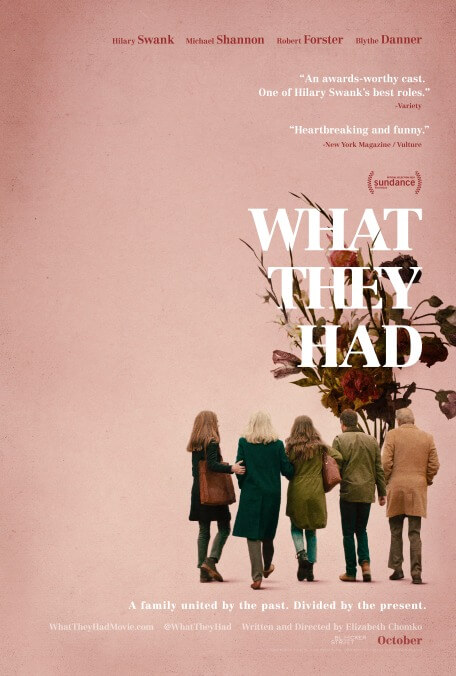Michael Shannon is refreshingly ordinary in What They Had, a family drama with focus issues
Film Reviews Movie Review
Michael Shannon is so great at playing over-the-top villains that it’s easy to forget how great he is at playing normal people, too. Writer-director Elizabeth Chomko’s debut feature, What They Had, takes great advantage of Shannon’s everyman likability, casting him as a gruff Chicago bar owner overwhelmed by the responsibility of taking care of his aging parents. Shannon’s Nicky is a working-class man’s man whose prickly demeanor suggests someone who doesn’t care enough, even as his deep investment in his parents’ lives implies the opposite. Unfortunately, Shannon isn’t the film’s star, and What They Had loses momentum whenever he’s not on screen.
What They Had instead centers on Hilary Swank’s Bridget—affectionately known as Biddie—the sibling who married young and moved away to California while Nicky stayed close to home and took on the burden of looking after their parents. Wrapped up in the problems of her unhappy marriage and the rebellion of her college-aged daughter, Emma (Taissa Farmiga), Biddie hasn’t realized just how bad things have gotten for her mom, Ruth (Blythe Danner), who is entering the sixth of seven stages of Alzheimer’s disease. The scare that finally brings Biddie and Emma back to Chicago comes when Ruth wanders into a snowstorm in the middle of the night on Christmas Eve. Since Biddie holds power of attorney, it’s up to her to decide what happens next. As Nicky makes a convincing case for placing Ruth in the care of an assisted living “memory center” for patients with Alzheimer’s and dementia, Biddie’s bullish father, Burt (Robert Forster), insists the best place for his wife is at home with him and the loving, personalized care only he can give her.
Playing a chronically passive character, Swank sits back in the role, projecting an earnest frailty in everything Biddie does. It’s not a bad performance per se, but she feels fundamentally miscast—believable neither as a member of this gruffer family (her time away in California at least justifies that) nor as a woman who married young and devoted her life to raising kids. In fact, Emma’s addition to the plot often feels like an unnecessary tangent, one the film can’t quite decide if it cares about or not. Swank fares better when she’s paired with Shannon, Danner, and Forster, who turns in one of the film’s strongest performances as the domineering father figure who doesn’t realize just how much control he wields over his family. Yet there’s an odd disconnect between the implication that this family’s problems mostly stem from their Irish-Catholic emotional repression and the fact that they never seem to stop having blunt, self-aware discussions about their emotional issues. Chomko’s background in playwriting shows through in the theatrical way her characters argue.
The film’s strongest scenes explore the strange reversal of roles that happen as parents age and their adult children start taking care of them. Biddie bathes Ruth and warmly acknowledges that her mother used to do the same for her. Chomko emphasizes the high stakes of Ruth’s condition, but isn’t afraid to find the humor within it as well; there are times when Biddie and Nicky can’t help but laugh at the absurdity of their mom’s confusion, as when she announces plans to have a baby or hits on someone she doesn’t realize is a family member. In the still burgeoning genre of films about Alzheimer’s, Chomko is careful to present a serious, even-handed exploration of how best to help those struggling with the disease. Assisted living is portrayed as a viable, compassionate option, not evidence of irresponsible children eager to dump their parents’ problems on someone else. But though it depicts her condition with empathy, Ruth isn’t really the focal point of What They Had; her dementia is largely a prism through which Chomko explores other long-simmering family issues. Montages of old photos and videos give emotional depth to Ruth and Burt’s lifelong partnership, yet other elements of Ruth’s pre-Alzheimer’s life—particularly her relationship with her children as a career-minded woman—are left hinted at but largely unexplored.
There are moving moments in What They Had, and it builds to a quietly effective final act that manages to find hope without undercutting the struggles that have come before. At its best, the film imbues its Chicago-set story with lived-in specificity, complemented by Forster and especially Shannon’s stripped-down acting. Yet in the overcrowded field of indie dramas about intergenerational family struggles, What They Had feels inessential; it rarely rises to the level of its performances.